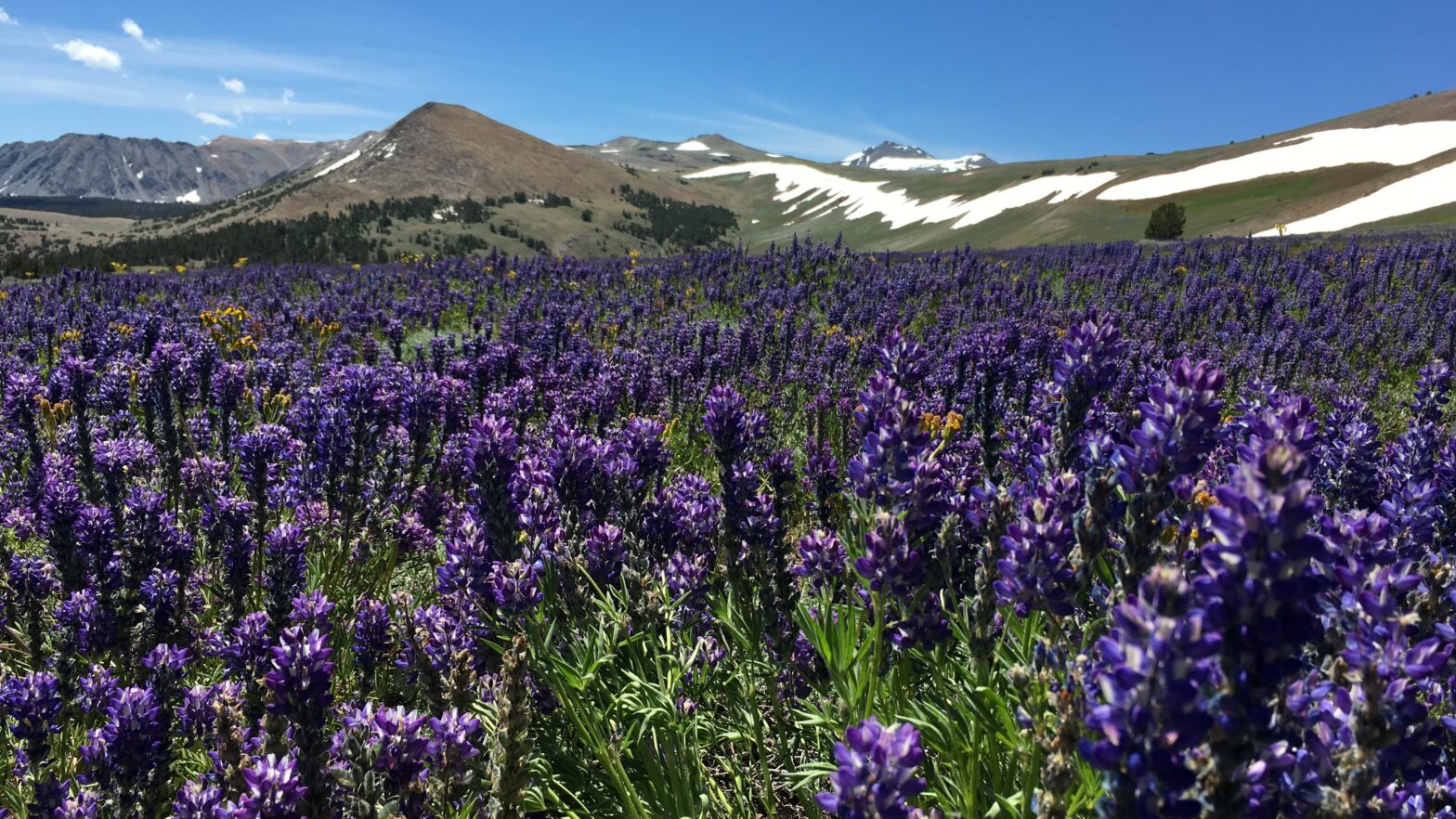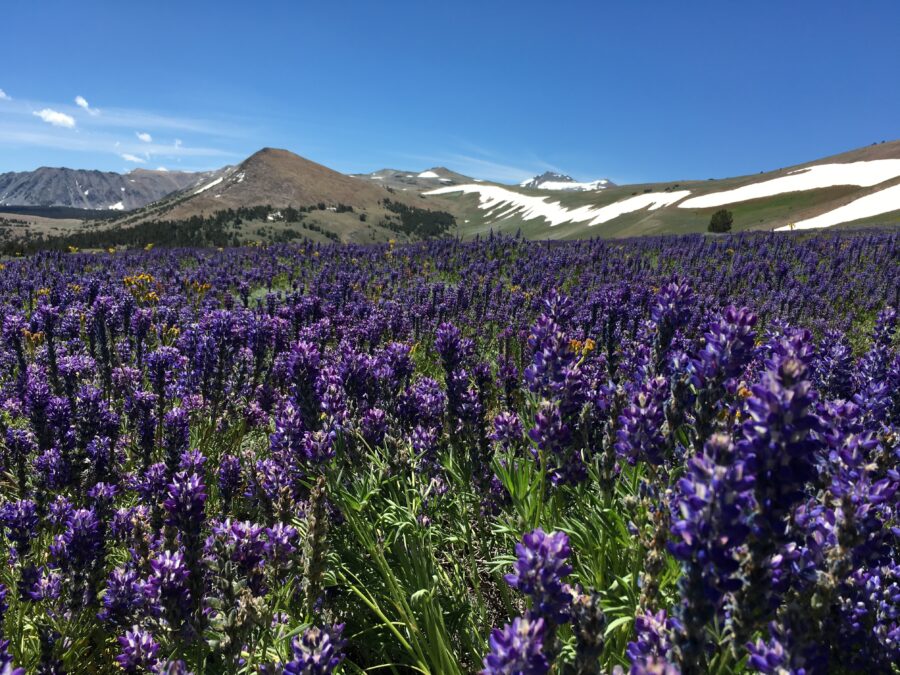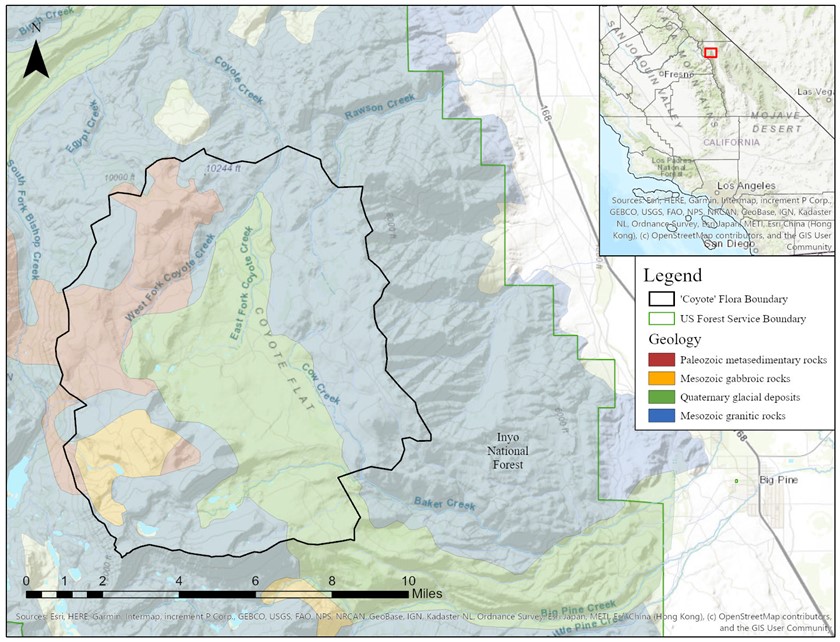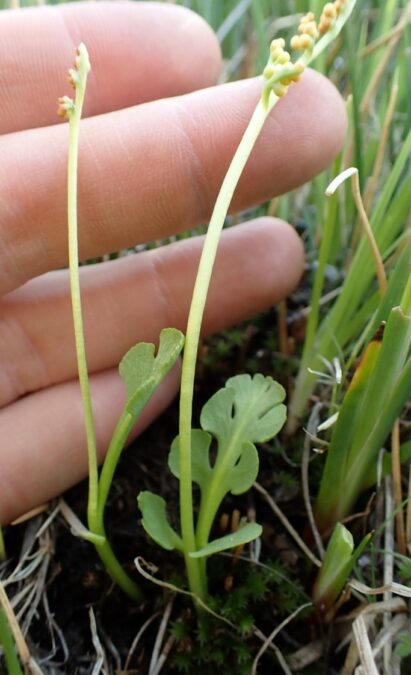
Exploring Plant Diversity in the Eastern Sierra: A Flora of Coyote Ridge and Flat, Part II
by Martin Purdy, M.S. in Botany, Claremont University

Fieldwork for my master’s thesis, A flora of Coyote Ridge and Flat, is now complete. The study area covers ca. 50 sq. miles of the eastern slope of the Sierra Nevada just southwest of the town Bishop, California (Fig. 1). Over the last two and a half years, I have completed 22 trips resulting in 83 days in the field, over 800 iNaturalist photo observations, and nearly 1,400 plant collections. Plant identification is ongoing, but a number of interesting discoveries have already been confirmed. These include one new record for the state of California, a few new records for the Sierra Nevada mountains, and a handful of first occurrences for the southern High Sierra Nevada region (as defined in the Jepson Manual).
The new California record is that of Amblyodon dealbatus (short-tooth hump moss; Fig. 2), which grows on rotting wood, organic soil, and in rich fens across the boreal zone of the northern hemisphere. Although common in certain parts of its range, this moss is rare in North America and had never been recorded in California before. Its next closest occurrences are in northeastern Nevada and, beyond that, the Colorado Rockies. I am indebted to David Toren and Jim Shevock at California Academy of Sciences for their help in identifying this specimen (in addition to all my other moss collections!).

Another interesting discovery from the same locality (Ford Flat area) is a large population of Thalictrum alpinum (alpine meadow-rue; Fig. 2). This diminutive Thalictrum species (<15 cm tall) grows in meadows and moist, gravelly soils from around 9,000 – 12,000 feet. It is relatively rare in California, with occurrences restricted to the alpine White Mountains and a few scattered locations east of the Sierra Nevada crest. New populations discovered during this project represent the first records of this species from the southern Sierra Nevada.
Another interesting discovery from the same locality (Ford Flat area) is a large population of Thalictrum alpinum (alpine meadow-rue; Fig. 2). This diminutive Thalictrum species (<15 cm tall) grows in meadows and moist, gravelly soils from around 9,000 – 12,000 feet. It is relatively rare in California, with occurrences restricted to the alpine White Mountains and a few scattered locations east of the Sierra Nevada crest. New populations discovered during this project represent the first records of this species from the southern Sierra Nevada.
The last notable discoveries I will highlight here are new records for three separate Botrychium species. Botrychium is a genus of ferns in the family Ophioglossaceae, which go by the common name moonworts. They are typically quite small and spend most of their lifecycles underground, making them notoriously difficult to find. Thirteen species are known from California, and all except one (B. simplex) are considered rare by the California Native Plant Society. Botrychium crenulatum (scalloped moonwort) had previously been recorded from Coyote Flat, but a new population for this species was documented, along with new occurrences of B. ascendens (ascending moonwort) and B. simplex (little grapefern; Fig. 3). These records do not represent range extensions as in the two examples above; nevertheless, it was immensely gratifying to discover new populations of these charismatic and elusive ferns. I give credit to Keir Morse for first spotting these in the field.

The White Mountain Research Center (WMRC) generously supported my research through a 2020 mini-grant, which allowed me to stay at the Owens Valley Station in between extended field trips to my study area. WMRC’s soft beds and hot showers provided much needed rest, relaxation, and recuperation time that were critical to boosting my morale and motivation to get back out into the field. So, I just wanted to send a big thank you to all WMRC staff and volunteers for all you do to make visiting the research stations such a pleasure. I hope to visit again soon!
Martin’s thesis can be read HERE